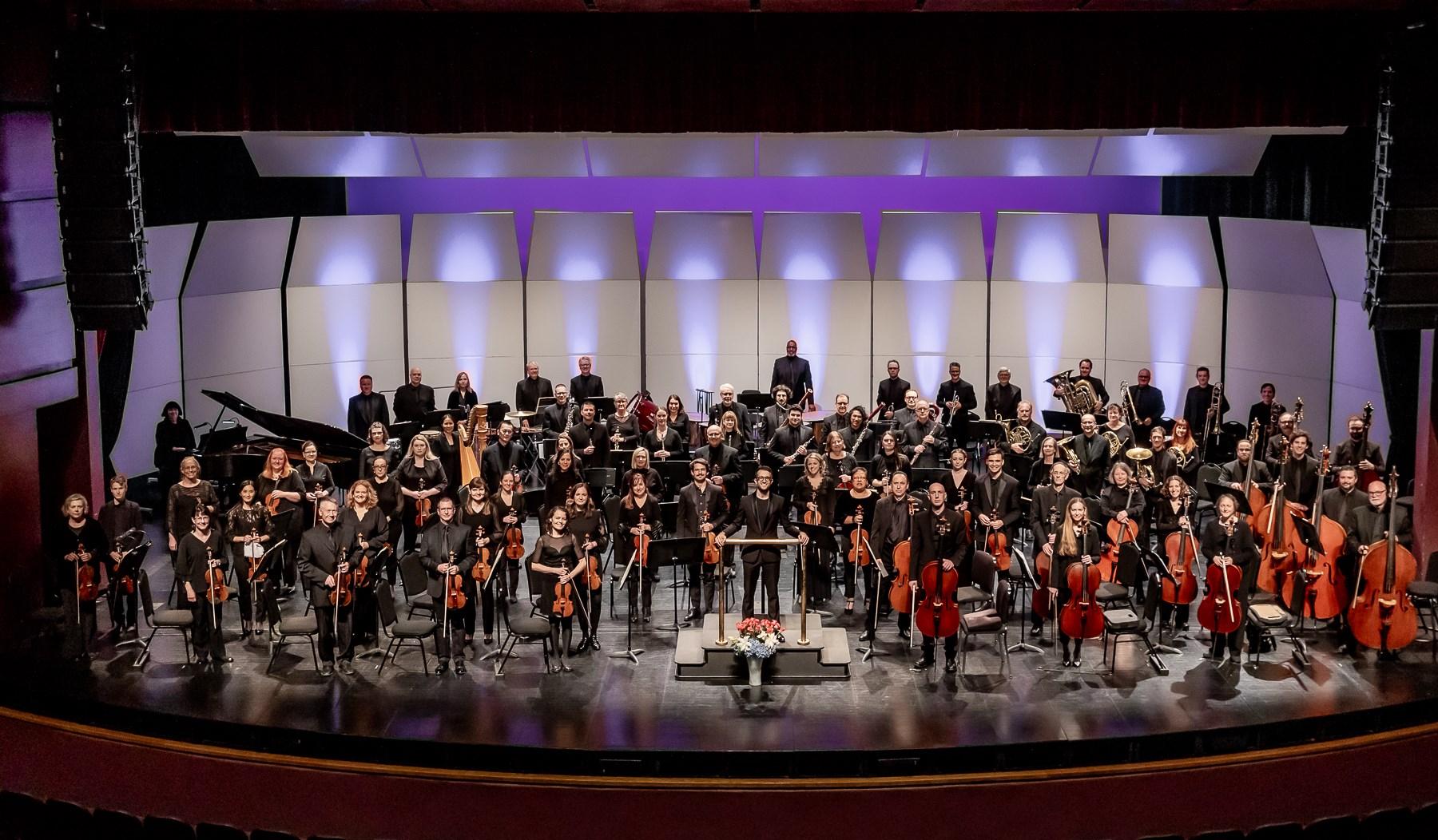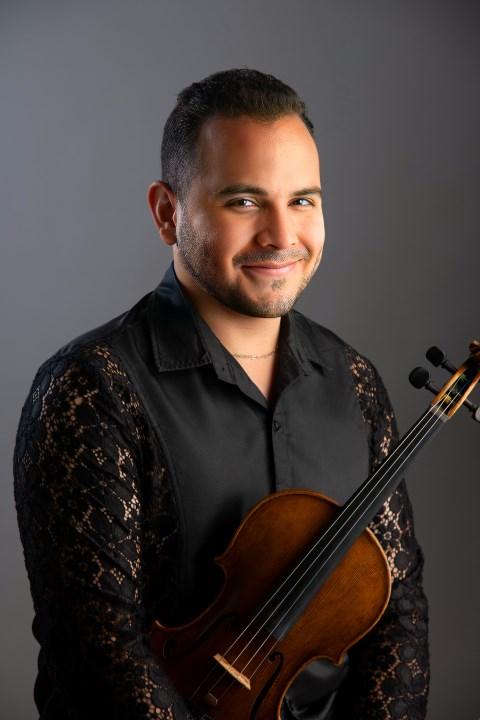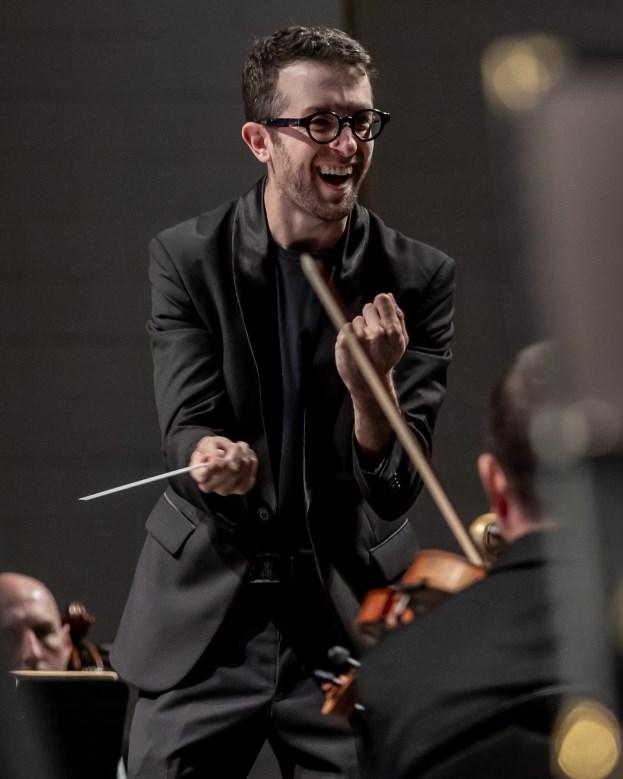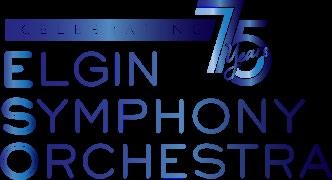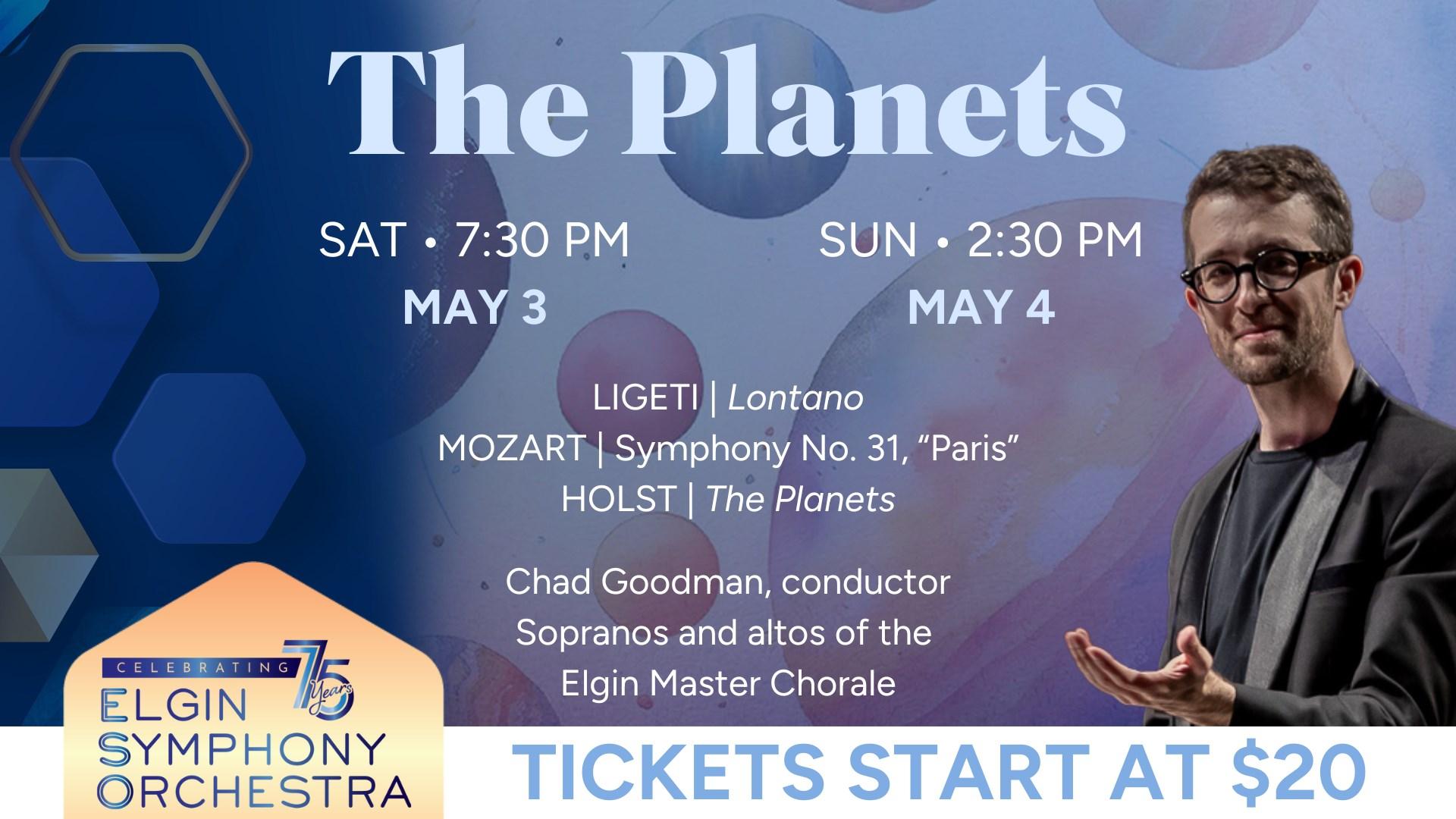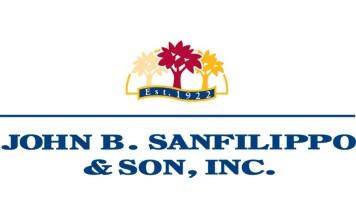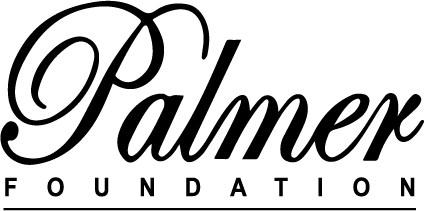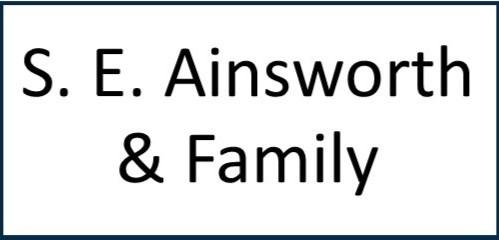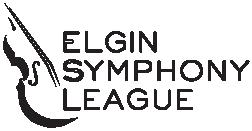ORCHESTRA PERSONNEL/PERSONAL DE LA ORQUESTA
Violin I
Isabella Lippi
Concertmaster
Eleanor Bartsch** Associate
Concertmaster
Gerald Loughney
Kate Carter
Eric Pidluski
Joseph Malmquist
Susan Carlson
Carol Dylan
Helen Kim Lee
Wendy Evans
Carmen Abelson
Jennifer Leckie
Violin II
Daniela Folker
Principal
Robbie Herbst
Assistant Principal
Caroline Slack
Maria Arrua
Susan Thorne
Steve Winkler
Cristina Buciu
Elizabeth Huffman
Kelvin Lin
Meg Lanfear
Kathryn Siegel
Viola
Rebecca Swan
Principal
Loretta Gillespie
Assistant Principal
Josef Fischer++
Jason Butler
Erin Rafferty
Sava Velkoff
Susan Posner
Cello
Matthew Agnew
Principal
Nazar Dzhuryn
Assistant Principal
Kerena Fox
Mark Kuntz
Robert Weber
Elizabeth Start
Sara Sitzer
Double Bass
Timothy Shaffer** Principal
Jeremy Attanaseo
Assistant Principal
Susan Sullivan
Flute
Jean Bishop
Principal
Scott Metlicka
Piccolo
Scott Metlicka
Oboe
Kevin Gupana
Guest Principal
Joseph Claude
English Horn
Joseph Claude
Clarinet
Gene Collerd
Principal
Trevor O’Riordan
Bassoon
Vincent Disantis
Principal
Collin Anderson
French Horn
Greg Flint
Trumpet
Ross Beacraft
Principal
Michael Brozick
David Gauger
Assistant Principal
Trombone
Reed Capshaw
Principal
Adam Moen
Bass Trombone
Mark Fry
Tuba
Charles Schuchat
Principal
Timpani
Robert Everson
Principal
Percussion
Brian Oriente
Principal
Michael Folker
ADMINISTRATION/
Chief Executive Officer, Marc Thayer
Extra Musicians
Violin I & II
Sam Battista, Laura Burns, Katherine Hughes, Kate Lano, Pamela Lutter, Joanna Nerius, Rika Seko, Paul Vanderwerf
Viola
Becky Coffman, Wilfred Farquharson, Kelly Larson, Claudia Lasareff-Mironoff, Rebecca Miller, Nick Munagian
Cello
Timothy Archbold
Bass
Wes Jones, Lauren Pierce
Flute
Eliza Bangert
Clarinet
Leslie Grimm
Bassoon
Karl Rzasa
French Horn
Vice President of Artistic Planning & Operations, Eric Gaston-Falk
Director of Marketing, Chuck Kocal
Director of Development, Leslie Antoniel
Orchestra Librarian & Digital Marketing Manager, Macauley Manzano
Community Partnerships & Orchestra Personnel Manager, Greg Heintz
Patron Services & Office Manager, Luiza Moraes
Public Relations Manager, Donna Lake
Corporate Development Manager, Betty Briceño
Development Coordinator, Jonathan Horn
In Harmony Program Coordinator, LaTrisha Williams
Box Office Assistant, Nicholas Urich
Translator, Elsa Jimenez
Emma Sep-
Christian Anderson, Greg
MUSIC DIRECTOR / DIRECTOR MUSICAL
Chad Goodman has received widespread praise for thrilling conducting that combines “precision, agility and fervor” (N. Stanić Kovačevic, South Florida Classical Review) and for displaying the “pitch perfect combination of abandon and subtlety” (L. Budman, South Florida Classical Review)
The 2024/25 season marks Goodman’s 2nd season as Music Director of the Elgin Symphony Orchestra only the fifth leader in the orchestra’s prestigious seven-decade history. Concerts with the ESO include Tchaikovsky’s Symphony No.6; Beethoven’s Violin Concerto with Stella Chen; Sibelius’ Symphony No. 5, coupled with Tchaikovsky's Violin Concerto, performed by Samuel Vargas; and Holst’s masterpiece, The Planets.
Goodman holds a Bachelor of Music degree from the Eastman School of Music and a Master of Music degree from San Francisco State University. His mentors include Michael Tilson Thomas and Alasdair Neale.
GUEST ARTIST/ARTISTA INVITADO
Violinist Samuel Vargas Teixeira has received wide recognition for his powerful artistry and awards including First Prize of the Sphinx Competition (2021), Yamaha Young Performing Artist (2019), Grand Prize of the Jefferson Symphony Orchestra Concerto Competition (2019), First Prize in Atlanta’s GA Philharmonic Competition (2017), and Concertmaster Ambassador of the United Nations (2014).
Vargas holds the Pin Artistic Merits from “City Key of Prince George” and “Central Bank in Canada,” and has performed on tours in 40 countries, collaborating with acclaimed artists like Gustavo Dudamel, Simon Rattle, Daniel Barenboim, Claudio Abbado, and Christian Vasquez.
Vargas began his violinistic journey through Venezuela’s El Sistema Program. In 2017 Samuel won the prestigious Woodruff Award enabling him to study with his current mentor and professor Sergiu Schwartz at the Schwob School of Music at CSU.
He is the founder and president of the Samuel Vargas International Music Foundation, an organization which is enriching communities and society through the power of classical music, emphasizing a holistic approach to music education supporting students in all areas of studies and well-being. Through his passionate work and entrepreneurship, he has founded 8 active Venezuelan chamber orchestras and currently mentors young musicians in the US and South America.
Written by - Daniel Maki
Fiesta!
Jimmy López (b. 1978)
Jimmy López is a native of Lima, Peru, and received his early musical education there. In 2000, he moved to Helsinki, Finland, to study at the Sibelius Academy, one of Europe’s finest music schools. He would eventually come to the United States, receiving a doctorate in music from the University of California-Berkeley.
López found his own musical voice early, absorbing influences from various sources but combining them into his own distinctive musical personality. His influences have included everything from the high modernism of the Darmstadt School of composers, to the traditional tonal music of composers such as Sibelius, not to mention folk and popular music. Today his music is performed by major musical organizations throughout the world. From 2017 to 2020 he was Composer-in-Residence of the Houston Symphony Orchestra and is now serving as the Mead ComposerCurator of the Chicago Symphony Orchestra for the 2024-2025 season. A major milestone was the performance in 2015 at Lyric Opera of Chicago of his opera Bel Canto, based on the novel of the same name by Ann Patchett. The premiere was recorded and shown in 2017 as part of the PBS series, Great Performances.
López’ best known work is Fiesta!, which marked a turning point in his career and since then has received more than a hundred performances. The work was commissioned by Peruvian conductor and long- time friend of the composer, Miguel Harth-Bedoya, to commemorate the 100th anniversary of the Lima Philharmonic Society in 2007. Originally scored for a small group of 14 performers forming an electro-pop ensemble, it was so successful that the composer was asked to rescore it for full orchestra.
Fiesta! contains four pop dances entitled respectively: Trance 1, Countertime, Trance 2, and Techno. Trance 1 and Trance 2 are related, both beginning with fast and energetic music but ending more quietly. As the composer has explained, the word “trance” comes from so-called techno music, which is a form of electronic dance music that makes use of hypnotically repetitive rhythms. As movements 1 and 3 are related, so too are movements 2 and 4, both of which maintain a high level of energy throughout and are filled
with strong syncopated and irregular rhythms. The percussion section, which includes bongo and conga drums, is prominent in these movements.
The concluding Techno movement is based on LatinAmerican rhythms. In the composer’s own program notes he explains that this movement contains “the most direct allusion to the techno genre.”
Fiesta! is a skillfully orchestrated and fascinating study in rhythmic variety, creating the festive atmosphere that its title implies.
Violin Concerto in D major, op. 35 Piotr Ilyich Tchaikovsky (1840-93)
It is well known that not all artistic masterpieces are greeted with immediate approval, a fact which is illustrated with particular clarity by Tchaikovsky’s Violin Concerto. Premiered in 1881 in Vienna, the work produced in its early performances such masterpieces of musical invective as the remark by one critic that “it was an accumulation of discords, confused climaxes, and dressed-up trivialities.” Even more memorable was the famous diatribe by Eduard Hanslick, that demigod of Viennese music critics, who said that the concerto was music that “stinks in the ear.”
Exactly what it was that caused his nibs, Herr Hanslick, olfactory as well as auditory distress is not now easy to discern, but the concerto had already had its troubles before the critics got to it. Madame von Meck, Tchaikovsky’s fanatically devoted patron, had criticized it earlier, and Tchaikovsky was bitterly disappointed when Leopold Auer, the great violinist and pedagogue to whom the first performance was offered, expressed reservations about the work and refused to play it.
Today, of course, the concerto is heard in the practice rooms of all conservatories and its beautiful melodies and brilliant virtuoso writing maintain it as one of the two or three most popular concertos in the violin repertoire.
The first movement begins with a brief orchestral introduction that will never reappear. This sets the stage for a quiet, somewhat improvisatory, entrance by the soloist which then leads to a statement of the melodious main theme which will dominate the movement. After some dazzling virtuoso passage work a new theme appears, marked con molto espressione, and which does indeed
send the violin soaring above the orchestra in the most expressive possible way. The development section includes a set of variations on the principal theme and then leads to a virtuosic cadenza which fully tests the technical prowess of the soloist while serving as a kind of meditation on themes already heard. As the cadenza ends, the recapitulation begins with the principal theme heard in a solo flute. A whirlwind coda ends the movement.
The slow movement is a Canzonetta (little song) which demonstrates Tchaikovsky’s superlative gift for melody. A beautifully melancholy theme in minor key is followed by a brighter section in major key. The movement connects to the finale without pause.
The finale introduces a different aspect of the violin: its tradition as a folk instrument. The main theme is reminiscent of the trepak, a Russian folk dance, and there are references to Russian folk tunes and Gypsy-style fiddling. Perhaps it was this Russian ethnic flavor that so disturbed Eduard Hanslick that he had to hold his nose. From his viewpoint in Vienna, the epicenter of the great Germanic musical tradition, such music probably seemed uncouth and foreign. Nevertheless, this movement, with its spectacular virtuosic writing and driving rhythms, brings the work to an excitingly furious conclusion.
Finally, it should be said that Leopold Auer finally saw the error of his ways and, as he put it, “received absolution” from the composer. Not only did he play the concerto himself with great success, but he made it virtually the theme song of the great Russian school of violin playing by teaching it to many of his students including such fabled fiddlers as Heifetz, Milstein, and Elman.
Symphony No. 5 in E-flat major, op. 82
Jean Sibelius (1865-1957)
Jean Sibelius enjoyed a degree of worldwide celebrity achieved by few composers during their lifetime. He was particularly esteemed in the Anglo-Saxon countries, where he was viewed by many as the saviour of the great European symphonic tradition at a time when the avant-garde had virtually abandoned traditional symphonic writing. Cecil Gray, the prominent English critic, called him “the greatest symphonist since Beethoven.” Yale University offered him an honorary doctorate, and the Eastman School of Music, one of this country’s leading music schools, offered him its
directorship which he politely declined. Winston Churchill sent him his favorite cigars which were gratefully accepted.
In his own country, he had already as a young man become a symbol of Finnish culture and gradually assumed the status of a national monument. Thus it was that his fiftieth birthday on 8 December 1915 was celebrated virtually as a national holiday, with, naturally enough, a performance of his latest symphony serving as the focal point of the festivities. Sibelius himself conducted the Helsinki Municipal Orchestra on the momentous day in an all-Sibelius program which featured the new Fifth Symphony.
The new work was in sharp contrast to his previous symphony, completed in 1911. Written at a time when Sibelius feared for his life because of throat cancer, the Fourth Symphony was an austere, intellectually demanding work, and in some ways as close to “modernism” as he would ever get. The Fifth Symphony, on the other hand, was a joyously triumphant work, a fact that no doubt has had much to do with its continued popularity.
The premiere pleased the public but not the composer himself. Always extremely self-critical, Sibelius would continue to labor long and hard over the new work, producing another version in 1916, and then, in 1919, the final version in which the symphony is usually now heard. The most important change in the final version was the telescoping of the first two movements of the original into a single movement, thus reducing the traditional four movement symphony to a three-movement work. Incidentally, such experiments with symphonic form would eventually lead to the most radical solution of all in Sibelius’ final symphony. The Seventh Symphony is written in one continuous movement.
Some commentators have called the Fifth Symphony Sibelius’ “Eroica,” a reference to Beethoven’s Third Symphony, subtitled the “Eroica” and also in the key of E-flat which was often Beethoven’s “heroic” key. There is evidence, however, if we are to continue the analogy with Beethoven, that in some ways the Fifth Symphony is also a “Pastoral” Symphony. In his detailed study of the symphony, musicologist James Hepokoski has carefully examined Sibelius’ sketchbooks and diaries of the period. They indicate that the composer was very much in his “mystical nature” frame of mind at the time. From earliest childhood Sibelius had been particularly sensitive to nature (in Finland nature is always close at hand, even in the largest cities), and he seems to have identified his music almost pantheistically with the nature around him. At his country estate at Ainola, Sibelius had every opportunity to experience nature in its
purest form as the following diary entry shows: “Today at ten to eleven I saw 16 swans. One of my greatest experiences! Lord God, the beauty! They circled over me for a long time. Disappeared into the solar haze like a gleaming silver ribbon.”
One of the most striking aspects of the Fifth Symphony is the theme which dominates the last movement a majestic theme with a kind of swinging motion produced by a series of large skips in the melody. Over the years commentators have identified it in various ways, some calling it a ‘bell” theme. The most picturesque description was certainly that of the great English scholar D.F. Tovey, who likened it to “Thor swinging his hammer.” Correspondence between Sibelius and his closest confidant of the time, Axel Carpelan, make it clear that this melody was a “swan hymn” in the composer’s mind, an ecstatic evocation of the mysteries of nature. More of the swan hymn in a moment.
The opening movement of the Fifth Symphony has often been called one of the most strikingly original symphonic movements that Sibelius ever wrote. As mentioned above, it combines an opening movement with a scherzo second movement, which is faster and lighter in character. The beginning presents us, in typical Sibelian fashion, a number of fragments which, with his own sense of musical logic, gradually metamorphose and combine with each other to build a symphonic structure. After an impressive climax the meter changes to 3/4, and we discover that we have moved seamlessly to the scherzo. From this point on the feeling is of a gradual accelerando which drives the movement to a breathtaking finish.
The slow movement offers contrast with simple, bucolic music in the key of G major. It is a set of variations, not on a melody but really on a distinctive rhythm which repeats obsessively throughout the movement. At one point the bass line moves in wide skips, a foretaste of the swan hymn to come.
If the first movement was a gradual movement from slow to fast, the finale reverses the process. The movement begins with mysterious tremolo figures in the strings and the nervous motion soon involves the winds as well. Before too long, however, the majestic hymn to the swans breaks forth, evoking what the composer in his own words called “nature mysticism and life’s Angst.” Accompanying the hymn is a new theme in the woodwinds, strikingly poignant perhaps because of its simplicity it consists of just a few diatonic scale steps in a slightly syncopated rhythm. The quiet nervous motion returns, with the strings eventually taking the woodwind theme and expanding it into a full-blown romantic
melody. Finally, the swan hymn returns in all its glory and the motion slows down, preparing one of the most strikingly original endings in all of symphonic music. Six short chords, separated by silence which dares the audience to cough or applaud, have the force of thunder claps and bring this remarkable work to a close.
Special Thanks
To Our Donors
$100,000 and Above
S.E. Ainsworth Family Fund
OTTO Engineering, Inc
Willow Springs Charitable Trust
$50,000-99,999
John B. Sanfilippo & Son, Inc Pepper Family Foundation
Anonymous-2
$20,000-49,999
Illinois Arts Council
Francis J. & Patricia
A. Houlihan Foundation
$10,000-19,999
Herman and Mary Zwirn
John and Sharyon
DaSilva
Florence B. & Cornelia A. Palmer Foundation
$5,000-9,999
Tom and Linda Long
Erik and Nelleke
Roffelsen
Diane Campbell
John and Gwen Gage
Phyllis Blizzard
Lyrasis
Elgin Arts Commission
Frank and Pat Maxson
Bert Crossland
Seigle Foundation
Barrington Area
Community Foundation
Elgin Symphony League
Martin and Brigitte
Nobs
Dave and Dolores
Nelson
Jeanne Sigman
Walter and Alexis Alm Household
Aubrey and Rachel Neville
Jim and Judy Tammi
Music Performance Trust Fund
John and Pat Dekowski
Arlyn and Jeanne Tolzmann
Harry Eng and Fran Zollers
Kim Duchossois
Anonymous-1
Ed and Karen Schock
Margaret Kuhajek
Michy Kabeshita
Semmy and Janice Semerad
James Sosnoski and Patricia Harkin
Phil Zack
Ark Technologies, Inc
Driskill Foundation
Grace Bersted Foundation, Bank of America, N.A., Trustee
W. R. Meadows
Anonymous-1
$1,000-4,999
Sandy Horvath Hagan
Richard and Carol
Leonard Foundation
Jeff and Jayne Griese
Eric Larson and Margaret Williams
Cherry Stoddard
Helen Sprague
Wally and Andrea
Gumm
Dave and Carlene
Kellenberger
James and Valerie
Heintz
Page and Deanna
Engelke
Russ and Diane
Maxwell
Nancy Rascher
Joan Moen
Rob and Jodie
Stackowiak
Ray and Julie Daly
Dave and Suzanne
Johnson
Advocate Sherman
Health Systems
Gene Collerd and Beth Overland
Barb Maring
Andre Fiebig
George and Anita Werderich
Henry and Suzanne Rozycki
Jim and Karen Mansfield
Kairos Counseling Center
Kelley Wall
Taos Community Foundation
Tyndale House
Publications
Michele Clark
Libby Hoeft
Dave Bosely
Rich and Diane
Robertson
Richard Renner
Donna Bach
David Gerber
Chuck and Judy
Hanlon
Craig and Karen
Johnson
Brian Pritchard and Bonnie HennPritchard
Jim and Kathy Pluymert
Laura Brady
Dennis and Janet
Conway
Elizabeth Littel
Horst and Victoria
Fiebig
Joel and Laura Lamplough
Marsha Newcomer
Rich and Esther Bell
U-46 Educational Foundation
Marc Thayer
Dave Kellenberger
Jaime and Donna Garcia
Karl Gabbey
Terry and Sue Gabel
Donna Templeton
George and Meg
Peirce
Jane Lehmann
Mike Dempsey
Wickstrom Auto Group
Walter and Nancy Carlson
Carole Medal
Jean Pechtel
Jon and Jean Stone
Richard Goodman
John and Carole
Ruby
Helen Moore
Jim and Lois MyersBauer
Ann and Greg
Chipman
David and Teresa Fabish
John Mullins
Patricia Kumicich
Phyllis Vinci
St. Charles Bank & Trust Company
The Dallas Foundation
Ursula Klicker
Wells Fargo Advisors
- Schaumberg
Mark and Carol
Taylor
Mike and Marilyn
McCarthy
Candace McCreary
Robert and Francine
Chiappetta
Steve and Kathryn
Huffman
Tom and Barb
Rowan
Bob and Carolyn
Malm
Bob and Sue Johnson
Charlie and Nancy Zimmerman
Dave and Jim Olson
Dave Brown
Diane Neal
Doug Kramp
Edward and Phyllis
Boyd
Jeff Neufeld
John and Muriel
Fenzel
John and Nancy
Robb
$500-999
Mary Maloy
Bonnie Skapyak
Dave and Mary Hunter
Tim Shaffer
Sanford and Monica Morganstein
Anne Burman
Blassick Household
Glenn and Sue Spachman
John and Ruth Bradburn
Kelly and Karen Worden
Stephen and Linda Knight
Robert and Kathleen Hahn
John and Josephine
Muchmore
Richard Schwemm
Sharon Hahn
Donald Bak
Ernest and Joanne Perone
Alex Ehioba
Manny and Carolyn KirkLikou
Laura Sterba
Bob Sommer
Brian Pinon and Christen
Harvey
Doug Anderson
Janet Page
Judy and Gary Griffith
Larry and Debbie Wild
Ken Hebeisen
Mark Kuntz
Mike Czerwionka
Patrick and Therese
Donoghue
Paul and Dottie Foundation of DuPage Foundation
Miko and Tracy Kabeshita
Deb Vensel and Steve
Kennedy
John Pilsits
Barb Long
Kathryn Canny
Hal and Karen Theis
Matt Dorfman
Linda Stolt
Tim Wilson
Andrew Grams
Bob and Jan Andry
Bonnie Wheaton
Murphy Murphy and Assoc. CPA, Ltd.
Allan and Joanne Ayers
Allen and Janet Kennedy
Bill and Agnes Kovacs
Buck and Martha Comstock
Charles Wilt
Conibear Fund, Renaissance Charitable Foundation
Elmer and Mary Sweet
Eric and Jon Gaston-Falk
Frank and George Ann
Kahoun
Fred and Sue Thorne
Harrington and Connie Bischof
Peter and Connie Landwehr
Ron and Kris Rogers
Ron and Pat Henning
Trinidad AguirreArmenta Foundation for the Arts
Anonymous-1
Helen Anderson
Howard and Gene Royer
Jim and Patricia Jocius
John and Cheryl Peacock
John and Kyla Brittain
Larry and Jeanne Hintz
Larry and Pam Cabeen
Lila Fagan
Liz McKay
Mark and Joan Albert
Marlene Boncosky
Melinda Borum
Mike and Cecilia
Anderson
Nancy Fleming
Parker and Katie Thompson
Paul Reed
PK Tax Services, LLC
Rick and Nancy Nelson
Roger and Margaret
Mechtenberg
Ross Beacraft
Sharon LeCount
Tim Baran
Vivian Hileman
Warren and Pat Dahn
ZipSprout
Anonymous-1
$250-499
Wayne Heinmiller
Bob and Tracey Coleman
Karen Meckstroth
Robert and Mary McCann
Rob and Lynn Gilly
Bill and Roseann Stenzel
Carl and Mary Ellen Flaks
Dale and Craig Braun
Judy McDonald
Michael Montgomery
Tom and Joyce Egan
Bob and Barb Green
Garth Anderson
Bruce and Kathleen
Sicklesteel
Glen and Beth Prezembel
Lou and Betty Cella
Dennis Rossow
$100-249
Aimee and Christopher
Dundon
Alain DeLeon
Art and Cathy Malm
Bill and Carol Blohm
Bill and Jane McCauley
Bill Schnell
Bonnie Fitzpatrick
Carl and Guila Zeigler
Charles Burnidge
Charlie Schuchat
Cliff and Linda Scheifele
Debra Chapman
Dorothy Voigt
Ernest and Catherine
Kosciuk
Frank and Colleen
Kirkaldy
George and Gloria Theros
Jerry and Judy
Drommerhausen
Jim and Sara Anderson
John and Marilyn Ortinau
Donald and Marilyn Okonek
Earl and Susan Schulz
Jim and Sue Lamb
Bonita Kalaway
Schaumburg Christian School
Jackie Vossler
Tom and Linda Youngren
Jean Borre
Barb Bonner
Bob Acker and Alison Bleick
Dellora A. Norris Cultural Arts Center
James Dixon
Jay and Deborah Schroeder
John and Stephanie Cullian
Kathleen Lanfear
Ken Wojtkowiak
Leslie Antoniel
Luanne Scola
Melanie Abercrombie
Melissa Sherman
Mike and Karen Chapski
Nancy Rust
Peter Quinn
Philip Johnson
Rich and Patricia Lutz
Richard Vanhoeven
Ron and Margot Sersen
Ron Blake
Sandra Magana
St. Mary's School
Steve and Mary
Etherington
Wayne and Eileen
Reznicek
Terri Elizabeth King
George and Mary Rogers
Jim and Kathy Secora
Jim McNamee
Judy Hopkins
Marc Mellits
Mike and Robin Rothamer
Nancy Kawasaki
Norm and Diana Wilkinson
Savitha Susarla
Tish Calhamer
Tom and Terri Lamberti
Loni Mecum
Ron and Angela Keller
Diane Geary
Arthur J. Gallagher and Company
Walter and Mary Neubacher
Hale Engineering
Roy and Sandra Olson
John and Mary Rooks
Erin Rehberg
Lynn Mall
Robert and Marianne Cox
Donna Lake
Steve Wasilowski
Barbara Furman
Brian Godish
Cip and Linda Siete
Curt and Pam Siegel
Diane Schwemm
Einar and Lene Graff
Gerald and Daria Sapp
Greg and Beverly Tipps
Hugh Brady and Renee
Gladstone
Jane Miller
Jeff and Cheri Hunt
Jeffery and Sherri
Goodlove
Joan Gazdic
Joe and Linda Fagan
John and Karen Becker
John Floeter
John Rosenkrans
Jon and Joy Duerr
Joyce H. Barker
Judy Johnson
Lara Leoni
Lillian Croke
Linda and John Sala
Mary Ellen Endo
Maureen Resheske
Mike and Catherine
Murschel
Mike and Joyce Rawlings
Nancy Lamia
Pat and Kathy Nelson
Paula Mytych
Phil and Helene
Lambruschi
Pradip Sethi
Ray and Jane Mysliwiec
Serge Uccetta
Sharyle Doherty
Sycamore Middle School -
District 427
William Bible
Colin and Gorianne
Campbell
Lucy Duran
Cliff Rot
Patricia Small
Becky Marshall
Lorraine Gornick
Jim Bachman
Ben and Corinne
Grotenhuis
Joan Brozick
Liberty Mutual Matching
Gifts
Chicagoland Theatre Fund
Tom and Amy
LeTourneau
Avid Architecture PC
Carlos and Lilia Chavez
Don and Carol Andler
Gregor Sosnowski
Jean Crisler
John and Flicka Regan
John and Gail Goles
John Schwartz
Judy and Blair Johnson
Linda O'Gara
Marge Sekowski
Paul and Laura
Bruggeman
Reid and Carol
Rauschenberger
Rick Clute
Ryan and Renee Heitman
Susan Kennedy
Robert and Jolene Kappes
Douglas and Kelly Gagne
Lydia Larrabee
Rich and Marcia Rudin
Frank and Marilyn Dreier
John Dempsey
Trey Barker
Mary Harlos Household
Bill and Jusith Kendall
Dale Kuypers
Margaret Zawadzki
Lois Robinson
Devonna Armstrong
Wolko Design Group
Dan and Karen Fox
Eleanor Proctor
Richelle Harris
William Briska
Michael Prais
Scott and Michelle
Beutlich
Steve and Peggy Youngren
Jacqueline Perkins
Alice Garrison
Alignment Collaborative for Education
Art for All
Barb Mueller
Bill and Mary Duewel
Bill and Sue Toussaint
Bob and Sharon Gault
Brian Hebeisen
Brian Hopkinson
Carol Rechtoris
Carol Rupe
Charles and Kristine
Fulton
Dale Carlson
Darryl Deardorff
Dennis Smith
Donna Stroder
Elgin Area Chamber of Commerce
Erica Jimenez
Gerald and Carol Vovix
Greg and Aileen Vogel
James Dufelmeier
Jeannette Wars
Jennifer Durot
Joan Longmire
Joe Slezinger
John and Leslie Mabbott
John and Rita Carmody
Jonathan Horn
Joseph Shearin
Karen Owen
Katharine Compton
Kathleen Eddy
Ken and Martha Kemp
Ken and Ruth Carlson
Kerena Fox
Kurt and Jeanine
Thurmaier
Larry and Linda Fass
Larry and Susan Schuerr
Larry Dobbs and Madeline Beyer
Larry Drafall
Laureen Hildebrand
Lawrence and Renee
Bruce
Liberty Moritz
Linda Munson
Luana and Charles Byte
Mark Gartland
Martin and Marian
McGowan
Marvin Garber and Jane
Sorenson
Mary Thelander
Mike Luby
Mike Tellin
Milan Bagel
Mildred Johnson
Nancy Bachmann
Paul and Jan Weber
Rachel Licudine
Robert Garro
Roy and Lisa Miller
Scott Babus
Soren and Marilyn Backe
Stephen Hartman
Stephen Kammerer
Steve and Sue Tousey
Sue Allen
Suzanne Jongleux
Terry and Jay Carman
Tom and Claire
Johannesen
Tom and Doreen Rodgers
Xavier and Rose Velasco



